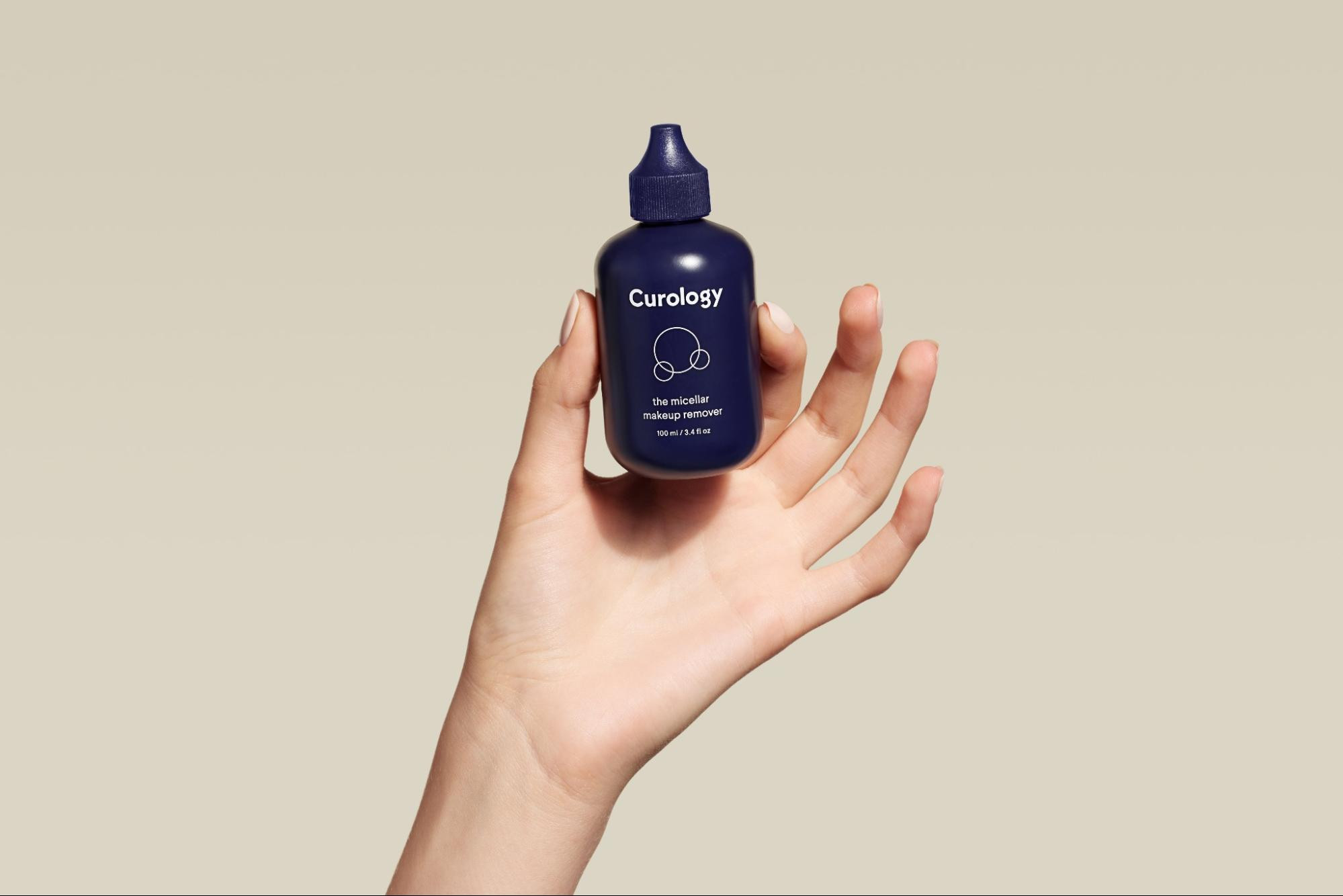Does Nail Polish Remover Remove Temporary Tattoos? Yes, acetone-based nail polish remover can effectively remove temporary tattoos by breaking down the adhesive and pigment. At tattooat.com, we understand the desire to quickly change or remove temporary body art. While nail polish remover can work, it’s essential to use it cautiously and follow up with proper skincare to avoid irritation and dryness. Keep reading to discover safer strategies for your temporary tattoo removal, tattoo care, and skin health journey!
1. Understanding Temporary Tattoos and Removal
Temporary tattoos are a popular way to express oneself without the long-term commitment of permanent ink. They are applied to the skin’s surface using adhesives or dyes, and their removal methods vary depending on the type of tattoo. According to Inked Magazine, temporary tattoos, specifically decal types, are designed to be water-resistant, making simple washing ineffective. However, nail polish remover, particularly acetone-based formulas, can break down the adhesive and pigment, facilitating removal.
1.1. Types of Temporary Tattoos
- Decal Tattoos: These are applied with an adhesive and sit on the skin’s surface.
- Henna Tattoos: These use dye that stains the top layer of the skin.
- Airbrush Tattoos: These involve spraying ink onto the skin using an airbrush.
1.2. Why Remove a Temporary Tattoo?
- Changing Preferences: You may simply want to try a new design.
- Formal Events: You might need a more formal appearance for certain occasions.
- Skin Reactions: Some individuals may experience irritation from the adhesive or dye.
2. Nail Polish Remover as a Removal Method
Nail polish remover, particularly those containing acetone, is a potent solvent that can dissolve many substances, including the adhesives used in temporary tattoos. However, it’s crucial to understand its properties and potential effects on the skin before use.
2.1. How Nail Polish Remover Works
Acetone works by breaking down the chemical bonds in the adhesive, allowing the tattoo to be gently wiped away. The effectiveness of nail polish remover on temporary tattoos stems from its ability to dissolve the adhesive compounds that bind the decorative pigments to the skin.
2.2. Precautions When Using Nail Polish Remover
- Ventilation: Use in a well-ventilated area to avoid inhaling fumes.
- Skin Sensitivity: Perform a patch test to check for adverse reactions.
- Avoid Open Wounds: Do not use on broken or irritated skin.
2.3. Step-by-Step Guide
- Prepare: Gather nail polish remover, cotton pads, and a mild soap.
- Apply: Soak a cotton pad with nail polish remover and gently press it onto the tattoo.
- Wait: Let it sit for a few seconds to allow the solvent to work.
- Wipe: Gently wipe the tattoo off with the cotton pad.
- Wash: Wash the area with mild soap and water.
- Moisturize: Apply a gentle moisturizer to hydrate the skin.
3. Potential Risks and Side Effects
While nail polish remover can be effective, it’s essential to be aware of the potential risks and side effects associated with its use on the skin. Overuse or improper application can lead to various adverse reactions.
3.1. Skin Irritation
Acetone is a strong chemical that can strip the skin of its natural oils, leading to dryness, redness, and irritation. According to a study by Portland State University’s Art Department in July 2023, prolonged or frequent exposure to acetone can disrupt the skin’s barrier function, making it more susceptible to environmental irritants and allergens.
3.2. Allergic Reactions
Some individuals may be allergic to acetone or other ingredients in nail polish remover, resulting in itching, burning, or even blistering. It’s crucial to perform a patch test before applying nail polish remover to a large area of skin.
3.3. Chemical Burns
In rare cases, prolonged contact with acetone can cause chemical burns, particularly on sensitive skin. To minimize the risk of chemical burns, it’s essential to use nail polish remover sparingly and rinse the area thoroughly with water after application.
4. Safer Alternatives for Temporary Tattoo Removal
Given the potential risks associated with nail polish remover, it’s advisable to explore safer alternatives for removing temporary tattoos. Several household products and gentle skincare methods can effectively dissolve the adhesive without causing harm to the skin.
4.1. Oil-Based Products
Oil-based products, such as baby oil, coconut oil, or olive oil, can gently dissolve the adhesive used in temporary tattoos. These oils are non-irritating and help moisturize the skin, making them an excellent choice for individuals with sensitive skin.
How to Use Oil-Based Products
- Apply a generous amount of oil to the tattoo.
- Let it sit for a few minutes to allow the oil to penetrate the adhesive.
- Gently rub the tattoo with a soft cloth or cotton pad.
- Wash the area with mild soap and water.
- Moisturize the skin to prevent dryness.
4.2. Makeup Remover
Makeup removers, especially those designed to remove waterproof makeup, can also be effective in removing temporary tattoos. These products are formulated to dissolve stubborn pigments and adhesives without harsh chemicals.
How to Use Makeup Remover
- Saturate a cotton pad with makeup remover.
- Press the cotton pad onto the tattoo for a few seconds.
- Gently wipe away the tattoo.
- Rinse the area with water.
 Curology-s_Micellar_Makeup_Remover_is_Formulated_to_Break_up_Waterproof_Elements_like_Decal_Adhesives
Curology-s_Micellar_Makeup_Remover_is_Formulated_to_Break_up_Waterproof_Elements_like_Decal_Adhesives
Curology’s Micellar Makeup Remover is formulated to break up waterproof elements like decal adhesives.
4.3. Exfoliation
Gentle exfoliation can help remove temporary tattoos by sloughing off the top layer of skin cells. Use a soft washcloth, exfoliating scrub, or even a sugar scrub to gently rub the tattoo in a circular motion.
How to Exfoliate
- Wet the skin with warm water.
- Apply a small amount of exfoliating scrub to the tattoo.
- Gently massage the area in a circular motion for a few minutes.
- Rinse thoroughly with water.
- Moisturize the skin to prevent dryness.
4.4. Adhesive Tape
Adhesive tape can be used to lift the temporary tattoo off the skin. Apply a piece of tape over the tattoo, press it down firmly, and then quickly peel it off. This method is most effective when the tattoo is already starting to fade or peel.
How to Use Adhesive Tape
- Cut a piece of tape slightly larger than the tattoo.
- Apply the tape over the tattoo and press down firmly.
- Quickly peel off the tape.
- Repeat as necessary until the tattoo is removed.
5. Aftercare Tips for Healthy Skin
After removing a temporary tattoo, it’s essential to follow a proper skincare routine to maintain healthy, hydrated skin. Whether you used nail polish remover or a safer alternative, these aftercare tips will help prevent irritation and promote healing.
5.1. Gentle Cleansing
Use a mild, fragrance-free cleanser to wash the area. Avoid harsh soaps or detergents that can strip the skin of its natural oils.
5.2. Hydration
Apply a generous amount of moisturizer to the skin. Look for products containing hydrating ingredients like hyaluronic acid, glycerin, or ceramides.
5.3. Sun Protection
Protect the area from sun exposure by applying a broad-spectrum sunscreen with an SPF of 30 or higher. Sunscreen helps prevent hyperpigmentation and protects the skin from UV damage.
5.4. Avoid Irritants
Avoid using harsh chemicals, exfoliants, or fragrances on the area for a few days after removing the tattoo. These products can irritate and dry out the skin.
6. Henna Tattoo Removal
Henna tattoos differ significantly from decal tattoos, as they dye the skin rather than adhere to its surface. As a result, removing henna tattoos requires a different approach.
6.1. Understanding Henna Tattoos
Henna is a natural dye derived from the henna plant. It has been used for centuries to create intricate designs on the skin, particularly in Middle Eastern and South Asian cultures.
6.2. Why Henna Tattoos Are Difficult to Remove
Unlike decal tattoos, henna dye penetrates the top layer of the skin, making it resistant to surface-level removal methods. The dye gradually fades as the skin cells exfoliate naturally.
6.3. Methods to Fade Henna Tattoos Faster
- Exfoliation: Regular exfoliation can help speed up the fading process by removing dead skin cells.
- Lemon Juice and Baking Soda: A mixture of lemon juice and baking soda can act as a mild bleaching agent.
- Micellar Water: Gently cleanses and may help to lift the dye over time.
6.4. Cautionary Notes
Avoid using harsh chemicals or abrasive scrubs on henna tattoos, as these can irritate the skin and potentially cause scarring. Be patient and gentle when attempting to fade henna tattoos, and always prioritize the health of your skin.
7. Addressing Allergic Reactions
Allergic reactions to temporary tattoos are rare but can occur, particularly with black henna tattoos containing PPD (p-phenylenediamine). Recognizing and addressing allergic reactions promptly is essential to prevent long-term complications.
7.1. Recognizing Symptoms
- Redness: The skin around the tattoo becomes red and inflamed.
- Itching: Intense itching at the tattoo site.
- Blistering: Small, fluid-filled blisters appear on the skin.
- Swelling: The area around the tattoo becomes swollen and painful.
7.2. Immediate Actions
- Remove the Tattoo: Gently remove the temporary tattoo to prevent further exposure to the allergen.
- Wash the Area: Wash the affected area with mild soap and water.
- Apply a Cold Compress: Apply a cold compress to reduce swelling and itching.
- Seek Medical Attention: Consult a healthcare provider for further evaluation and treatment.
7.3. Medical Treatments
- Topical Corticosteroids: These creams can help reduce inflammation and itching.
- Oral Antihistamines: These medications can alleviate itching and other allergy symptoms.
- Systemic Corticosteroids: In severe cases, oral or injectable corticosteroids may be necessary to control the allergic reaction.
8. Temporary Tattoos for Exploring Permanent Options
Temporary tattoos offer a unique opportunity to test out designs and placements before committing to permanent ink. At tattooat.com, we encourage using temporary tattoos as a creative way to explore your personal style and preferences.
8.1. Experimenting with Designs
Temporary tattoos allow you to try various designs, sizes, and styles without the long-term commitment. This is particularly useful for those who are unsure about what they want in a permanent tattoo.
8.2. Testing Placement
Placement is a critical factor in tattoo design. Temporary tattoos let you see how a design looks on different parts of your body, ensuring you choose the perfect spot for your permanent ink.
8.3. Gaining Confidence
Using temporary tattoos can boost your confidence in your choice, making you feel more comfortable and excited about getting a permanent tattoo.
9. Trends and Inspiration at tattooat.com
At tattooat.com, we stay updated on the latest trends and innovations in the tattoo industry. Here are some of the trends we’re excited about:
9.1. Fine Line Tattoos
Delicate and intricate, fine line tattoos are gaining popularity for their subtle elegance. These tattoos use thin lines to create detailed designs that are both understated and eye-catching.
9.2. Watercolor Tattoos
Watercolor tattoos mimic the look of watercolor paintings, using soft, blended colors to create vibrant and artistic designs.
9.3. Geometric Tattoos
Geometric tattoos feature precise shapes and patterns, often incorporating symmetry and mathematical concepts. These tattoos are visually striking and can hold deep symbolic meaning.
9.4. Blackwork Tattoos
Blackwork tattoos use solid black ink to create bold and impactful designs. This style is often used for tribal patterns, abstract art, and minimalist designs.
Table: Recent Tattoo Trends in the USA
| Trend | Description | Popularity |
|---|---|---|
| Fine Line | Delicate, intricate designs with thin lines | High |
| Watercolor | Soft, blended colors mimicking watercolor paintings | Medium |
| Geometric | Precise shapes and patterns with symmetrical elements | Medium |
| Blackwork | Bold designs using solid black ink | High |
10. Finding Inspiration and Artists on tattooat.com
tattooat.com is your go-to resource for finding inspiration, connecting with talented artists, and exploring the world of tattoos. Our platform offers a wealth of resources to help you on your tattoo journey.
10.1. Extensive Design Gallery
Browse our extensive design gallery for inspiration, featuring a wide range of styles, themes, and placements. Whether you’re looking for minimalist designs or intricate masterpieces, you’ll find endless ideas to spark your creativity.
10.2. Artist Directory
Connect with talented tattoo artists from across the USA through our comprehensive artist directory. Each artist profile showcases their portfolio, style, and contact information, making it easy to find the perfect artist for your vision.
10.3. Expert Articles and Guides
Access a library of expert articles and guides on tattoo care, trends, and techniques. Our resources provide valuable insights to help you make informed decisions and care for your tattoos properly.
10.4. Community Forum
Join our community forum to connect with fellow tattoo enthusiasts, share your experiences, and ask questions. Our forum is a supportive and welcoming space for anyone passionate about tattoos.
At tattooat.com, we are committed to providing you with the knowledge and resources you need to make your tattoo dreams a reality. Explore our site today and embark on your journey into the world of ink!
Temporary tattoos are a fun, commitment-free way to explore body art. While nail polish remover can remove them, it’s essential to weigh the risks against safer alternatives. For more inspiration, expert advice, and connections to talented artists, visit tattooat.com! Discover designs that speak to you, find the perfect artist to bring your vision to life, and learn how to care for your skin.
FAQs About Removing Temporary Tattoos
1. Is it safe to use nail polish remover to remove temporary tattoos?
Yes, acetone-based nail polish remover can be effective. However, it should be used cautiously due to the potential for skin irritation and dryness. Always follow up with thorough washing and moisturizing.
2. Can I use oil-based products to remove temporary tattoos?
Yes, oil-based products like baby oil, coconut oil, and olive oil are gentle and effective alternatives. They dissolve the adhesive without harsh chemicals, making them suitable for sensitive skin.
3. How does makeup remover help in removing temporary tattoos?
Makeup removers, especially those designed for waterproof makeup, can dissolve stubborn pigments and adhesives. They are formulated to be gentle on the skin while effectively removing temporary tattoos.
4. What is the best way to exfoliate a temporary tattoo for removal?
Gently rub the tattoo in a circular motion with a soft washcloth, exfoliating scrub, or sugar scrub. This helps slough off the top layer of skin cells and remove the tattoo. Always moisturize afterward to prevent dryness.
5. Can adhesive tape remove temporary tattoos?
Yes, adhesive tape can lift the tattoo off the skin. Apply a piece of tape over the tattoo, press down firmly, and quickly peel it off. This method works best when the tattoo is already starting to fade.
6. What should I do after removing a temporary tattoo to care for my skin?
After removing a temporary tattoo, cleanse the area with a mild, fragrance-free cleanser. Apply a generous amount of moisturizer containing hydrating ingredients like hyaluronic acid or glycerin.
7. How can I fade a henna tattoo faster?
Regular exfoliation, a mixture of lemon juice and baking soda, and micellar water can help fade henna tattoos faster. Be patient and gentle, and avoid harsh chemicals or abrasive scrubs.
8. What are the symptoms of an allergic reaction to a temporary tattoo?
Symptoms include redness, itching, blistering, and swelling around the tattoo site. Remove the tattoo immediately, wash the area, apply a cold compress, and seek medical attention.
9. What should I do if I have an allergic reaction to a temporary tattoo?
Consult a healthcare provider for evaluation and treatment, which may include topical or systemic corticosteroids and antihistamines.
10. How can I use temporary tattoos to explore permanent tattoo options?
Experiment with different designs, sizes, and placements to see how they look on your body. This helps you gain confidence in your choice before committing to a permanent tattoo.
Address: 1825 SW Broadway, Portland, OR 97201, United States. Phone: +1 (503) 725-3000. Website: tattooat.com.

